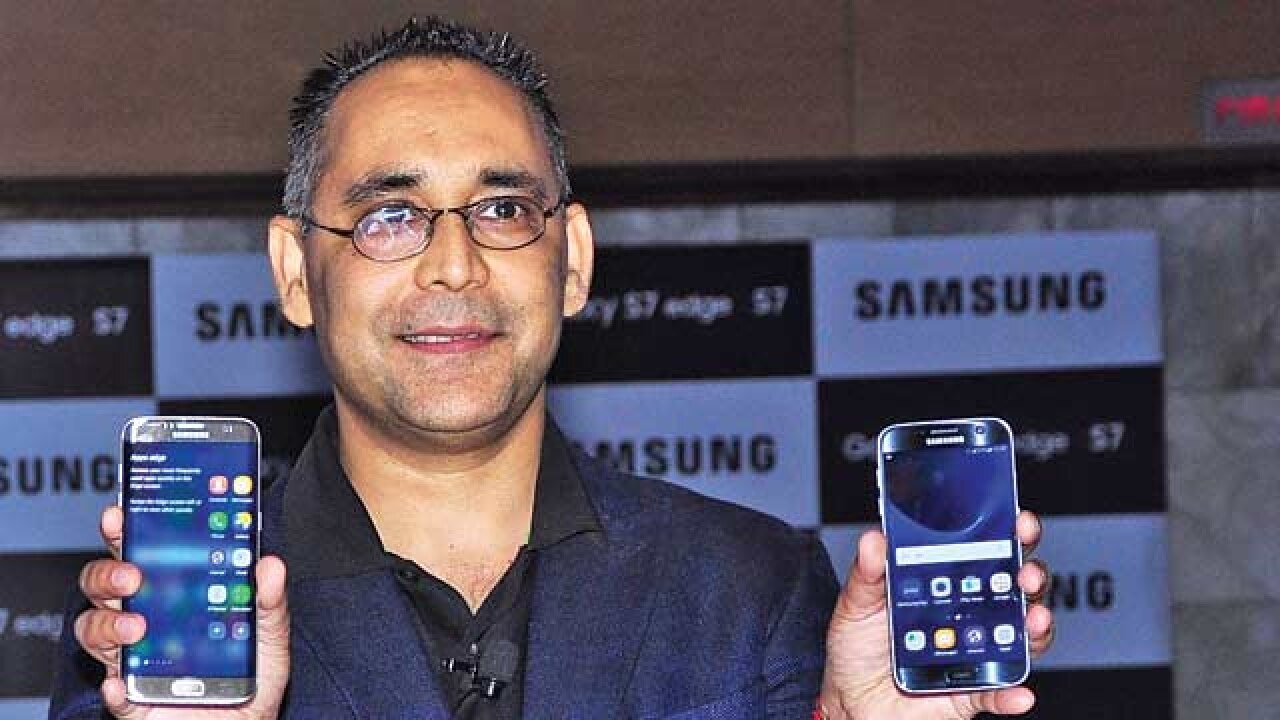
Samsung has stayed ahead in the smartphone race, both in the last quarter and full year of 2015. What's kept you in the lead?
In 2015, we started the first full-metal series. In January and February, we got a lot of traction in the high-end space (above Rs 20,00-30,000). Then, in April we introduced our Samsung Galaxy S6 that further propelled the growth in terms of market share gain in the premium segment. We also launched our Titan product. Besides these, achieving one million sales by June in the mass segment helped us as well (to stay ahead in the market). By the time we were in September-October period, we had further increased our portfolio and strengthened it with S6 Edge and Samsung Galaxy Note 5. So, we were dominant both in premium and mass segments. At the same time, we introduced our J series product with J5, J7 and J2. The J5 and J2 shook the market in a big way, we jumped from 35% market share in the beginning of January to close to 45.6% by end of December. Today, we have 46.5% market share (January 2016 data) in smartphone segment as per GfK Research (technology research firm).
In which segment did you see maximum traction happening?
Last year, smartphones grew by 20% in value terms. This year, we expect 16-18% growth. There are 3-4 key drivers which are propelling this growth. One, there is a huge base of feature phone users, almost 550 million, who are ripe for an upgrade to smartphone. Second, within the 170 million smartphones users itself, there are around 140 million users still using 2G-3G devices. This year, 4G is going to be a big growth driver. And as people look for devices which are speedier due to changed consumption pattern, we expect smartphone market to further expand. Third, the base itself is becoming large over a period of time. People who have bought smartphone devices would want to go for much improved devices. Those really are the key reasons why smartphone market is growing in India.
How many more models are going to be launched this year?
Last year, we launched almost 18 models. Majority of them are 4G devices. We don't have a number that we can share, but suffice to say that it will depend on the needs of the consumers. We do that by asking if its (new models) really addressing the needs of a particular consumer in that segment; where do we see a gap. These are the only reasons we will launch a product otherwise we will not. That's the philosophy we work with. There's no number, but clearly Samsung is aggressive. We will continue to bring fresh products to address all segments, not just feature phones but smartphones and tablets as well.
Many electronics and consumer durable products have seen slackening of demand, particularly in the rural and semi-rural areas. How has that impacted the demand for mobile handsets?
In fact, we are seeing a very high growth in rural and semi-rural areas because more and more people are absorbing smartphones in these markets to enrich their lives. We are seeing growth beyond tier 4 cities, extending to tier 5 and tier 6. People want to be connected to each other. Those who didn't care about smartphones earlier are latching on to it due to peer and social pressure.
Even though you are at the top in the mobile handset market, Apple and domestic players like Micromax, Lava and others are snapping at your heels, how serious is the threat from them?
We should remain ahead of competition. In the premium segment (Rs 30,000 and above), we have 48.2% market share and are dominant player. We have and will continue to lead in this segment. Having launched these devices (S7, S7 Edge on Tuesday), we will further consolidate and increase our share in it. As far as overall mobile handset market is concerned, competition is healthy. Competition is good because it keeps you on your toes, drives innovation and allows you to introspect.